-
 Bitcoin
Bitcoin $106,754.6083
1.33% -
 Ethereum
Ethereum $2,625.8249
3.80% -
 Tether USDt
Tether USDt $1.0001
-0.03% -
 XRP
XRP $2.1891
1.67% -
 BNB
BNB $654.5220
0.66% -
 Solana
Solana $156.9428
7.28% -
 USDC
USDC $0.9998
0.00% -
 Dogecoin
Dogecoin $0.1780
1.14% -
 TRON
TRON $0.2706
-0.16% -
 Cardano
Cardano $0.6470
2.77% -
 Hyperliquid
Hyperliquid $44.6467
10.24% -
 Sui
Sui $3.1128
3.86% -
 Bitcoin Cash
Bitcoin Cash $455.7646
3.00% -
 Chainlink
Chainlink $13.6858
4.08% -
 UNUS SED LEO
UNUS SED LEO $9.2682
0.21% -
 Avalanche
Avalanche $19.7433
3.79% -
 Stellar
Stellar $0.2616
1.64% -
 Toncoin
Toncoin $3.0222
2.19% -
 Shiba Inu
Shiba Inu $0.0...01220
1.49% -
 Hedera
Hedera $0.1580
2.75% -
 Litecoin
Litecoin $87.4964
2.29% -
 Polkadot
Polkadot $3.8958
3.05% -
 Ethena USDe
Ethena USDe $1.0000
-0.04% -
 Monero
Monero $317.2263
0.26% -
 Bitget Token
Bitget Token $4.5985
1.68% -
 Dai
Dai $0.9999
0.00% -
 Pepe
Pepe $0.0...01140
2.44% -
 Uniswap
Uniswap $7.6065
5.29% -
 Pi
Pi $0.6042
-2.00% -
 Aave
Aave $289.6343
6.02%
Is the high-level decline of the VR indicator a signal of a peak?
A sharp decline in the VR indicator after a high peak often signals weakening bullish momentum and potential market reversals in crypto.
Jun 19, 2025 at 04:43 am
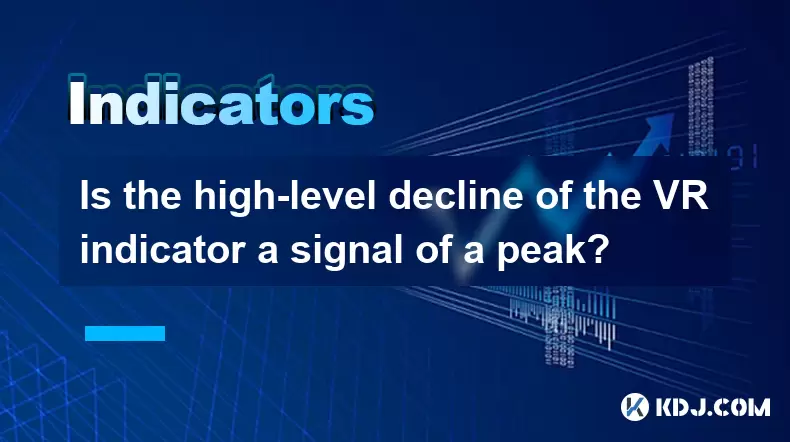
Understanding the VR Indicator in Cryptocurrency Trading
The VR indicator, or Volume Ratio, is a technical analysis tool widely used in cryptocurrency trading to assess the strength of price movements by analyzing volume. It calculates the ratio between the total volume of rising prices and falling prices over a specific period, typically 14 days. A VR value above 1 indicates that buying pressure is stronger than selling pressure, while a VR below 1 suggests the opposite.
In the context of crypto markets, where volatility and sentiment-driven moves are common, the VR indicator helps traders gauge whether an asset is overbought or oversold based on volume dynamics. When the VR reaches high levels and then experiences a sharp decline, it often raises questions about potential market tops or reversal points.
Key Takeaway: The VR indicator reflects the balance between bullish and bearish volume, making it crucial for identifying shifts in market sentiment.
What Does a High-Level Decline in the VR Indicator Mean?
A significant drop from a high VR level can signal a shift in momentum. When the VR rises sharply, it usually coincides with strong buying activity and increasing participation from investors. However, a sudden decline suggests that the upward trend in volume may be losing steam.
This could mean several things:
- Selling pressure is increasing: As more participants start to sell, the volume of declining prices begins to outweigh the volume of rising prices.
- Market exhaustion: A high VR followed by a rapid fall might indicate that buyers have exhausted their momentum, leaving the door open for profit-taking or short-term corrections.
- Divergence with price action: If the price continues to rise but the VR falls, this divergence could foreshadow a reversal.
Important Note: A declining VR alone should not be used as a standalone signal; it must be confirmed by other indicators and price behavior.
How to Interpret a VR Peak in Crypto Markets
Identifying a peak in the VR line requires careful observation of both the indicator and the corresponding price chart. Here's how to interpret it effectively:
- Look for extreme values: In highly volatile assets like cryptocurrencies, VR values above 2.5 or below 0.5 are considered extreme. These levels often precede reversals.
- Watch for crossovers: A crossover from high VR levels (e.g., above 2) back below 1.5 may indicate weakening bullish momentum.
- Compare with moving averages: Overlaying a simple moving average on the VR line can help filter out false signals and highlight genuine turning points.
- Plot the VR indicator on your preferred charting platform (such as TradingView).
- Set the period to 14 unless you're customizing for intraday or long-term trends.
- Identify when the VR crosses key thresholds (like 1.5 or 0.7).
- Analyze how these crossings align with candlestick patterns or support/resistance zones.
Critical Insight: Peaks in VR should be cross-referenced with RSI, MACD, or Bollinger Bands to confirm potential market tops.
Case Studies: VR Indicator Peaks and Market Reversals
Looking at historical data provides valuable insights into how VR peaks have correlated with actual price reversals in major cryptocurrencies:
- Bitcoin (BTC), Q1 2021: During the bull run, VR reached a peak of around 2.8 before sharply dropping to 1.2 within a few weeks. This preceded a notable correction of nearly 20%.
- Ethereum (ETH), Q2 2022: After a prolonged rally, the VR hit 2.1 and fell rapidly to 0.9, signaling a bearish phase that lasted several months.
- Solana (SOL), Q4 2023: A VR spike to 3.0 was followed by a quick drop to 1.0, which aligned with a pullback after a parabolic move.
These examples illustrate that while not every VR peak leads to a top, many significant reversals were preceded by a sharp decline from elevated VR levels.
Takeaway: Historical performance shows that VR peaks often coincide with market turning points, especially when supported by other indicators.
Practical Steps for Using the VR Indicator in Trading Decisions
For traders aiming to incorporate the VR indicator into their strategy, here’s a step-by-step guide:
- Add the VR indicator to your chart via platforms like TradingView or MetaTrader.
- Customize settings if necessary—default is usually 14 periods.
- Monitor for divergences between VR and price movement.
- Use the VR crossing down from above 2 as a warning sign for possible tops.
- Combine with volume profiles or order book depth to validate institutional or whale activity.
- Set alerts on your trading platform for when VR crosses critical levels (e.g., 1.5 or 0.7).
It’s also important to note that altcoins may react differently to VR signals compared to major coins like Bitcoin and Ethereum due to lower liquidity and higher manipulation risk.
Crucial Tip: Always use stop-loss orders and position sizing when acting on VR-based trade ideas.
Frequently Asked Questions
Q: Can the VR indicator be used across all timeframes?
Yes, the VR indicator can be applied to any timeframe, from 1-minute charts to weekly ones. However, its reliability increases on higher timeframes such as the 4-hour or daily chart, where noise and fakeouts are minimized.
Q: How does the VR indicator differ from the RSI?
While both measure momentum, the VR focuses specifically on volume ratios between up and down days, whereas RSI measures price change speed and magnitude. They complement each other well when used together.
Q: Is the VR indicator effective in sideways markets?
In ranging or consolidating markets, the VR tends to fluctuate around the 1.0 mark without forming clear peaks or troughs. Traders should avoid relying solely on VR in such conditions and instead focus on support/resistance levels.
Q: Can I build a trading bot using the VR indicator?
Yes, it's possible to create algorithmic strategies based on VR signals. Many platforms allow integration of custom scripts or third-party bots that can execute trades when VR crosses predefined thresholds. Ensure thorough backtesting before deployment.
Disclaimer:info@kdj.com
The information provided is not trading advice. kdj.com does not assume any responsibility for any investments made based on the information provided in this article. Cryptocurrencies are highly volatile and it is highly recommended that you invest with caution after thorough research!
If you believe that the content used on this website infringes your copyright, please contact us immediately (info@kdj.com) and we will delete it promptly.
- BAY Miner & XY Miners: Unlock Daily Earnings with BTC, DOGE, and LTC Cloud Mining
- 2025-06-20 10:25:12
- Decoding the Aaluxx Myth: Maya Protocol and the Smart Economy
- 2025-06-20 10:30:12
- Binance Wallet, Exclusive Token, Launch: What You Need to Know
- 2025-06-20 10:45:12
- CryptoQuant, Bitcoin, and Market Drops: Decoding the Signals
- 2025-06-20 11:05:12
- Bitcoin, Emerging Risk, and Treasury Companies: A New York Perspective
- 2025-06-20 11:05:12
- Semler Scientific's Bitcoin Bet: Bold Move or Risky Gamble?
- 2025-06-20 10:50:12
Related knowledge
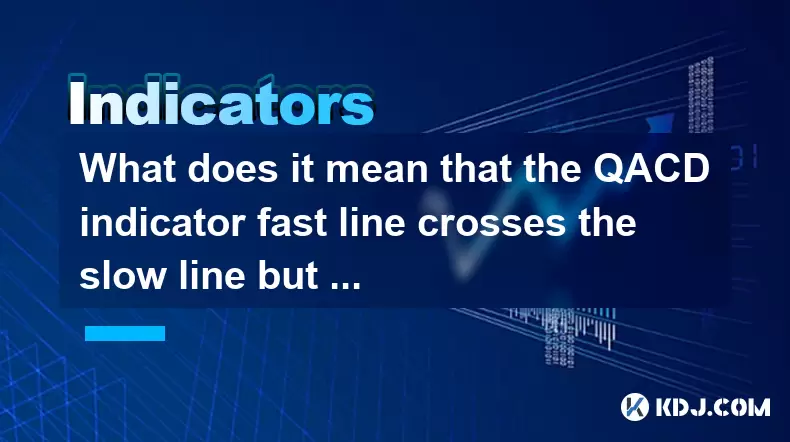
What does it mean that the QACD indicator fast line crosses the slow line but does not increase in volume?
Jun 20,2025 at 12:22pm
Understanding the QACD Indicator and Its ComponentsThe QACD (Quantitative Accumulation Convergence Divergence) indicator is a technical analysis tool used by traders to identify potential trend reversals, momentum shifts, and entry or exit points in cryptocurrency markets. It consists of two primary lines: the fast line, which reacts more quickly to pri...
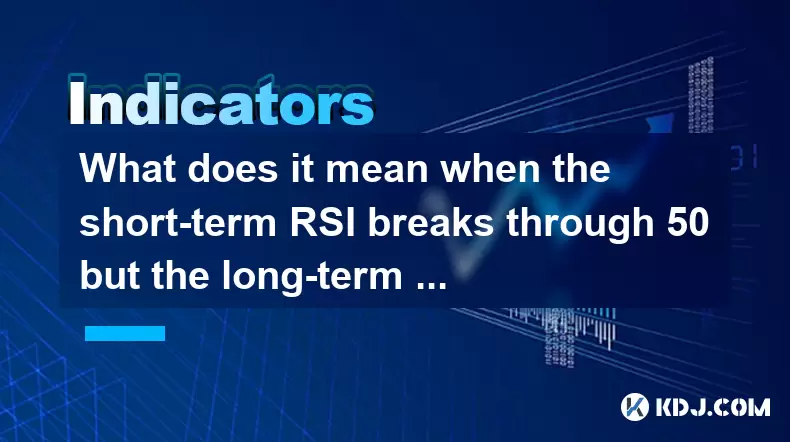
What does it mean when the short-term RSI breaks through 50 but the long-term RSI does not move in the RSI indicator?
Jun 20,2025 at 10:42am
Understanding the RSI Indicator and Its Dual-Term ApplicationThe Relative Strength Index (RSI) is a widely used momentum oscillator in technical analysis, primarily for identifying overbought or oversold conditions in an asset’s price movement. It typically operates on a scale from 0 to 100, with levels above 70 considered overbought and below 30 consid...
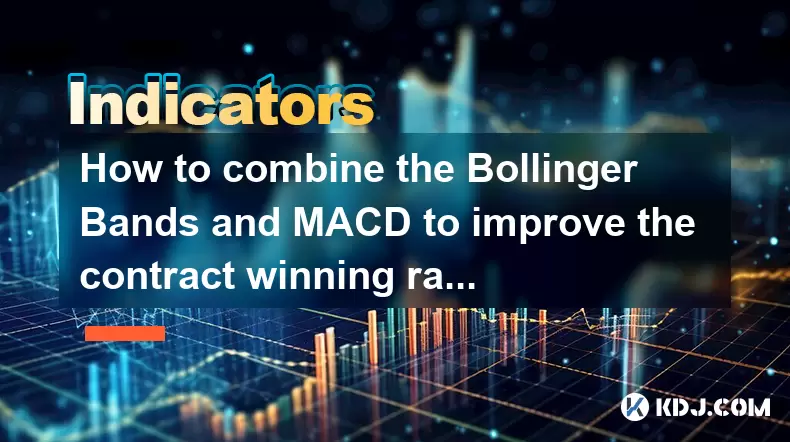
How to combine the Bollinger Bands and MACD to improve the contract winning rate?
Jun 19,2025 at 06:35pm
Understanding Bollinger Bands and MACD IndicatorsTo effectively combine Bollinger Bands and the MACD (Moving Average Convergence Divergence), it's essential to first understand what each indicator represents. Bollinger Bands consist of a middle moving average line and two outer bands that adjust based on market volatility. When prices move toward the up...
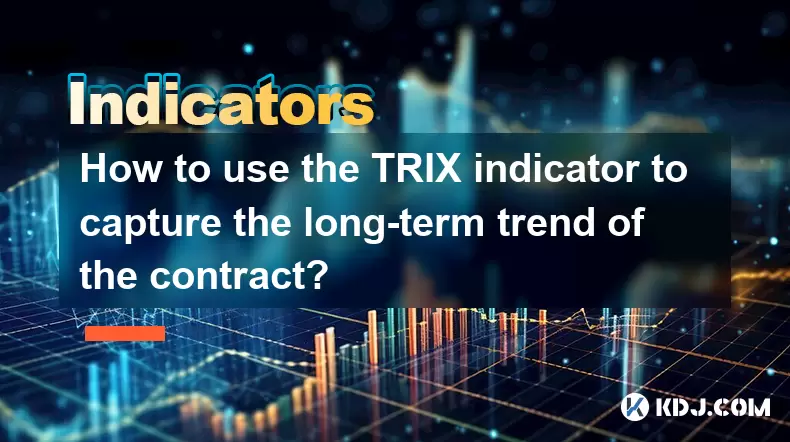
How to use the TRIX indicator to capture the long-term trend of the contract?
Jun 20,2025 at 09:14am
What Is the TRIX Indicator?The TRIX (Triple Exponential Average) indicator is a momentum oscillator used to identify oversold and overbought conditions, as well as potential trend reversals in financial markets. It is calculated by applying a triple exponential moving average to price data and then taking the percentage rate of change of that smoothed v...

How does the long lower shadow of the K line indicate the formation of the bottom of the contract?
Jun 19,2025 at 05:00am
Understanding the Long Lower Shadow in K-Line AnalysisIn cryptocurrency trading, K-line analysis plays a pivotal role in determining market sentiment and potential price reversals. A long lower shadow, also known as a long wick, is one of the most telling candlestick patterns that traders look for when assessing whether a bottom might be forming in a co...
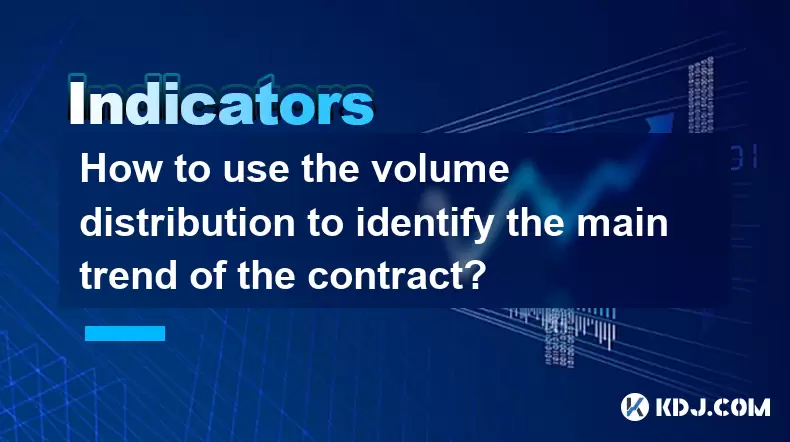
How to use the volume distribution to identify the main trend of the contract?
Jun 20,2025 at 03:56am
Understanding Volume Distribution in Cryptocurrency ContractsIn the realm of cryptocurrency trading, particularly within futures and perpetual contracts, volume distribution plays a pivotal role in deciphering market sentiment. Unlike spot markets, contract trading involves leveraged positions that can amplify both gains and losses. To navigate this com...

What does it mean that the QACD indicator fast line crosses the slow line but does not increase in volume?
Jun 20,2025 at 12:22pm
Understanding the QACD Indicator and Its ComponentsThe QACD (Quantitative Accumulation Convergence Divergence) indicator is a technical analysis tool used by traders to identify potential trend reversals, momentum shifts, and entry or exit points in cryptocurrency markets. It consists of two primary lines: the fast line, which reacts more quickly to pri...

What does it mean when the short-term RSI breaks through 50 but the long-term RSI does not move in the RSI indicator?
Jun 20,2025 at 10:42am
Understanding the RSI Indicator and Its Dual-Term ApplicationThe Relative Strength Index (RSI) is a widely used momentum oscillator in technical analysis, primarily for identifying overbought or oversold conditions in an asset’s price movement. It typically operates on a scale from 0 to 100, with levels above 70 considered overbought and below 30 consid...

How to combine the Bollinger Bands and MACD to improve the contract winning rate?
Jun 19,2025 at 06:35pm
Understanding Bollinger Bands and MACD IndicatorsTo effectively combine Bollinger Bands and the MACD (Moving Average Convergence Divergence), it's essential to first understand what each indicator represents. Bollinger Bands consist of a middle moving average line and two outer bands that adjust based on market volatility. When prices move toward the up...

How to use the TRIX indicator to capture the long-term trend of the contract?
Jun 20,2025 at 09:14am
What Is the TRIX Indicator?The TRIX (Triple Exponential Average) indicator is a momentum oscillator used to identify oversold and overbought conditions, as well as potential trend reversals in financial markets. It is calculated by applying a triple exponential moving average to price data and then taking the percentage rate of change of that smoothed v...

How does the long lower shadow of the K line indicate the formation of the bottom of the contract?
Jun 19,2025 at 05:00am
Understanding the Long Lower Shadow in K-Line AnalysisIn cryptocurrency trading, K-line analysis plays a pivotal role in determining market sentiment and potential price reversals. A long lower shadow, also known as a long wick, is one of the most telling candlestick patterns that traders look for when assessing whether a bottom might be forming in a co...

How to use the volume distribution to identify the main trend of the contract?
Jun 20,2025 at 03:56am
Understanding Volume Distribution in Cryptocurrency ContractsIn the realm of cryptocurrency trading, particularly within futures and perpetual contracts, volume distribution plays a pivotal role in deciphering market sentiment. Unlike spot markets, contract trading involves leveraged positions that can amplify both gains and losses. To navigate this com...
See all articles

























































































